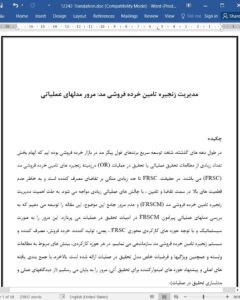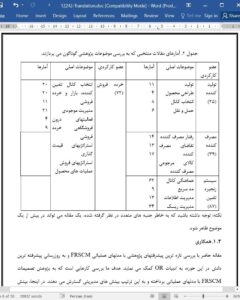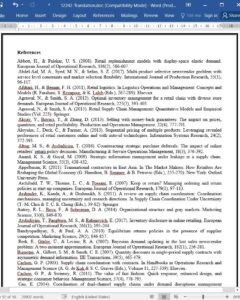Abstract
Over the past decades, we have witnessed the rapid development of giant fashion brands in the retail market which inspires a lot of operational research (OR) studies in fashion retail supply chains (FRSCs). In fact, FRSCs are highly consumer-demand driven and face many operational challenges coming from high demand and supply side uncertainties. Realizing the significance of fashion retail supply chain management (FRSCM) and a lack of comprehensive review on the topic, we develop this paper which examines the operational models on FRSCM in the mainstream OR literature. We organize this review systematically with respect to the core functional areas of FRSCs, namely the manufacturer, retailer, consumer, and fashion retail supply chain system. In each functional area, insights regarding the related studies as well as the specific OR model features and assumptions are generated. Finally, we conclude the review by summarizing the major findings and proposing promising future research areas (from both OR modeling and practical perspectives).
1. Introduction
1.1 Background
With the growing power of giant retail groups, retail supply chain management, in which the retailer assumes the leadership role of the whole channel, has become an important topic in modern supply chain management in recent years (Agrawal and Smith, 2015). There is no doubt that quick and reliable supplies, proper product quality, accurate transportation and inventory control, efficient and valuable information flow, competitive pricing strategy, and high-accuracy demand forecasting are all critical elements in supply chain management (Hanne and Dornberger, 2016). Retailing, as the ultimate element of retail supply chain directly facing consumers, has special emphasis on product availability and customer satisfaction. In fact, consumers only need a limited quantity of certain types among tremendous product assortments offered by the retailer. Therefore, it is crucial but immensely challenging for retailers to learn exactly what customers want, when and where demand occurs, and provide the needed information (e.g., demand forecasting, real-time sales data, consumer return and feedback, inventory status) to other upstream members so as to improve the supply chain performance (Afshari and Benam, 2011).











